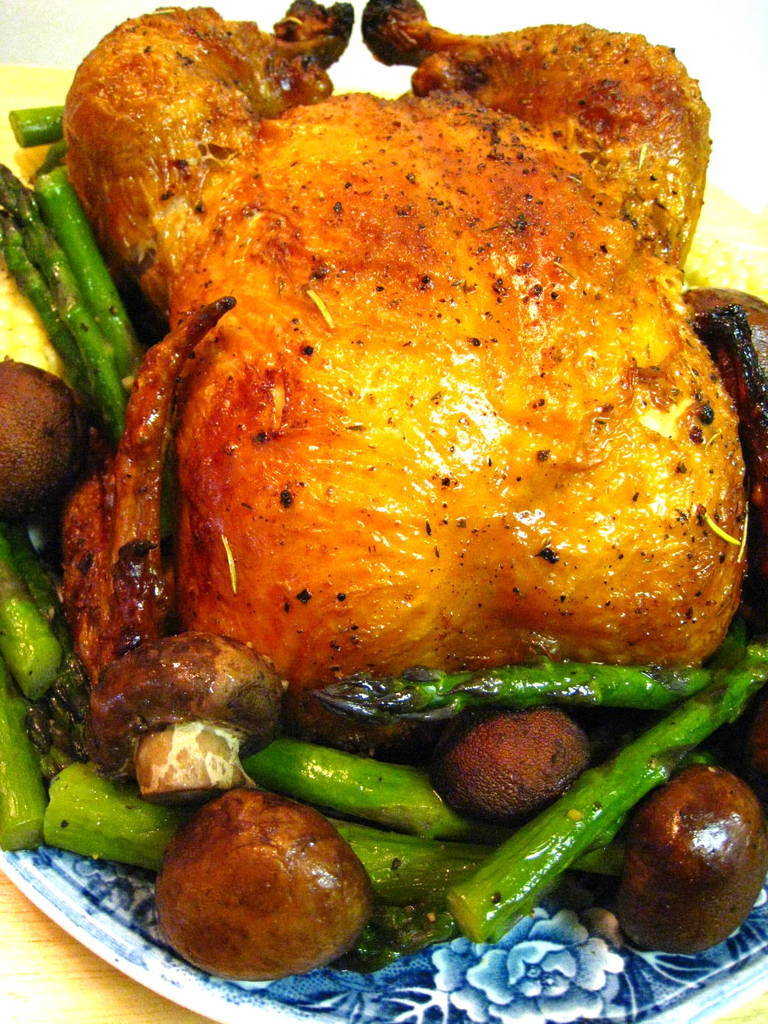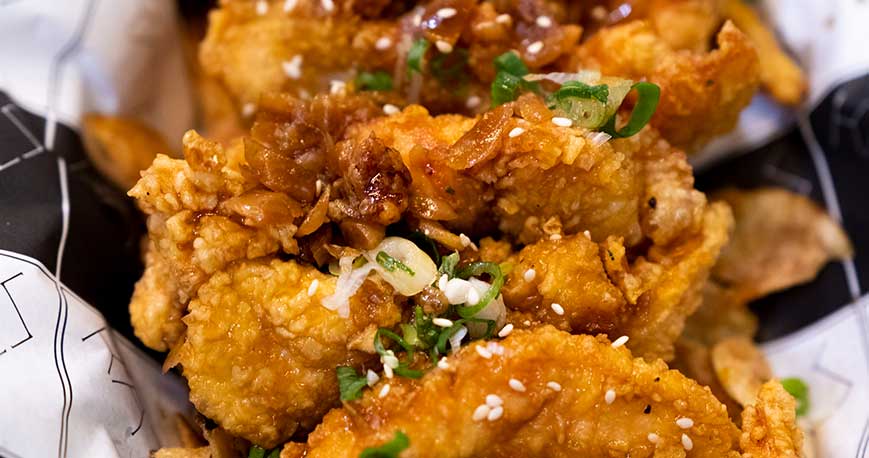More Entrees Recipes
thomas keller’s mon poulet roti (roast chicken)
Ingredients
One 2- to 3-pound farm-raised chicken (I used a 4 lb chicken)Kosher salt and freshly ground black pepper
2 teaspoons minced thyme (optional ; I used dried)
*** I also added 1 t dried rosemary
*Unsalted butter
*Dijon mustard
Instructions
I've come upon numerous excellent reviews about his quite famous (yet ridiculously simple!) mon poulet rotior roast chicken. And amongst a bevy of ("ultimate" or "the best")
roast chicken recipes conconcted by the most brilliant chefs in town at
my disposal, I was intrigued by Chef Keller's recipe the most.Why, you ask?
It only uses two major ingredients -
SALT and PEPPER.
While other brilliant cooks slather their roast chicken with loads of butter, stuff them with a bunch of herbs, spices and aromatic vegetables and citrus, even wrap them entirely with pancetta or bacon, this particular recipe is downright simple, but I must say, very much up to par.
I'm telling you, this recipe, with it's utter simplicity is proof that the number of ingredients isn't always directly proportionate to a GOOD roast chicken.
Mon Poulet Roti (Roast Chicken)
(taken from Thomas Keller's Bouchon cookbook)
Preheat the oven to 450°F. Rinse the chicken, then dry it very well with paper towels, inside and out. The less it steams, the drier the heat, the better.
Salt and pepper the cavity, then truss the bird. Trussing is not difficult, and if you roast chicken often, it's a good technique to feel comfortable with. When you truss a bird, the wings and legs stay close to the body; the ends of the drumsticks cover the top of the breast and keep it from drying out. Trussing helps the chicken to cook evenly, and it also makes for a more beautiful roasted bird.
Now, salt the chicken— I like to rain the salt over the bird so that it has a nice uniform coating that will result in a crisp, salty, flavorful skin (about 1 tablespoon). When it's cooked, you should still be able to make out the salt baked onto the crisp skin. Season to taste with pepper. (Love freshly ground pepper!)
Place the chicken in a sauté pan or roasting pan and, when the oven is up to temperature, put the chicken in the oven. I leave it alone — I don't baste it, I don't add butter; you can if you wish, but I feel this creates steam, which I don't want. Roast it until it's done, 50 to 60 minutes. Remove it from the oven and add the thyme, if using, to the pan. Baste the chicken with the juices and thyme and let it rest for 15 minutes on a cutting board.
Remove the twine. Separate the middle wing joint and eat that immediately. Remove the legs and thighs. I like to take off the backbone and eat one of the oysters, the two succulent morsels of meat embedded here, and give the other to the person I'm cooking with. But I take the chicken butt for myself. I could never understand why my brothers always fought over that triangular tip — until one day I got the crispy, juicy fat myself. These are the cook's rewards. Cut the breast down the middle and serve it on the bone, with one wing joint still attached to each. The preparation is not meant to be superelegant. Slather the meat with fresh butter. Serve with mustard on the side (Which I don't feel necessary as the chicken turned out to be quite flavorful) and, if you wish, a simple green salad. You'll start using a knife and fork, but finish with your fingers, because it's so good.
More Entrees Recipes


